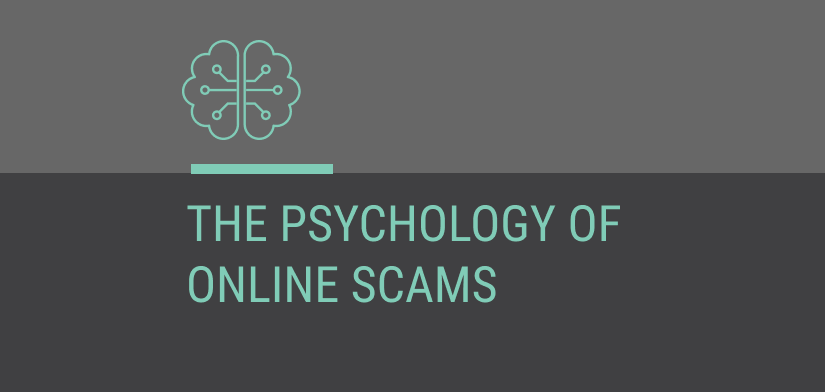The Psychology of Online Scams: How to Stay Protected
Between September 2023 and September 2024, it was reported by the Global Anti-Scam Alliance (GASA) that online scams cost the world over $1 trillion. These aren’t fringe cases. Many of the victims were educated, tech-savvy individuals who believed they’d never fall for such tactics. The uncomfortable truth? Today’s scammers are not just opportunists; they are experts in psychology, and increasingly, in AI-driven deception.
For small and medium-sized businesses (SMBs), understanding why people fall for scams is no longer optional. It’s the first step in protecting your customers and by extension, your brand’s credibility. When fraudsters impersonate your business online, consumers don’t blame the scammer. They blame you.
The 5 Vulnerabilities Scammers Exploit
The Urgency Trap
Scammers create artificial time pressure to bypass rational thinking. Phrases like “Your account will be suspended in 24 hours” or “Limited stock so order now!” trigger our brain’s fight-or-flight response, shutting down the prefrontal cortex responsible for logical reasoning.
The FBI’s Internet Crime Complaint Center reports that urgency-based scams, including fake shipping notifications and account verification requests, account for a large part of reported phishing attempts in 2024. For brands, the danger lies in how scammers cloak these messages in your name often using lookalike websites, domains, or messaging. This not only leads to consumer harm but chips away at your brand’s trust equity.
Authority Bias
Humans are wired to trust authority. Scammers exploit this by impersonating trusted brands, government agencies, financial institutions and even C-level executives. The Federal Trade Commission, in fact, found that 76% of successful business impersonation scams involved fake websites or emails that mimicked legitimate companies with remarkable accuracy and can appear in an email, text, or even phone calls.
When a consumer receives an email that appears to come from your business, complete with your logo, brand colors, and professional formatting, the brain defaults to trust. This authority bias explains why brand impersonation has become the fastest-growing category of online fraud, increasing by 132% year-over-year according to 2024 data from the Anti-Phishing Working Group.
Social Proof and Gen Z
Gen Z claims it’s more important to trust the brands they buy or use today than it was for any generation in the past. This principle of social proof suggests that people look to others’ behavior to guide their own decisions. Scammers weaponize this through fake reviews, fabricated testimonials, and counterfeit social media engagement.
A 2024 study by Trustpilot revealed that 89% of consumers read reviews before making online purchases, but nearly one in three reviews on unauthorized marketplace listings are fraudulent. When consumers see “5,000 happy customers” or “Trending product” badges on counterfeit listings, they’re more likely to trust the seller, damaging both their finances and your brand’s reputation when they discover the deception.
The Scarcity Effect
Scarcity creates perceived value. Limited-time offers and “only 3 left in stock” messages trigger fear of missing out (FOMO), which overrides people’s potential skepticism. It is often found that people value items they perceive as scarce more than identical items presented as readily available.
Cybercriminals hone in on this and use scarcity tactics in counterfeit product listings, fake investment opportunities, and phishing campaigns. In the Journal of Retailing, an article was published about the fact that scarcity tactics are an essential tool for marketers. The same is true for tactics used by scammers. The idea that something is promoted as almost unavailable, entices people to make rash decisions to purchase quicker.
Emotional Manipulation
Scammers are emotional architects. They craft narratives that trigger powerful feelings of hope for financial gain, fear of loss, or desire for exclusive opportunities.The Information Security office at Carnegie Mellon University, recently issued an article about the concept of emotional manipulation. It cites how cyber criminals are focusing less on historical technical defenses and more on exploiting human emotion, they want you to click or respond before even thinking. The manipulation can take two forms, it can pose in a positive form, ie: “you’ve won a prize, but you must respond fast’ or as a threat, “You owe taxes back, call this number immediately before your account is frozen”. This manipulation can now be via message, text, email or even a phone call.
Why Anyone Can Fall for a Scam
Intelligence doesn’t immunize people against scams. Instead, it seems to be due to situational factors and the fact that people are human. When someone encounters a convincing scam at the end of a long workday while simultaneously managing multiple tasks, their cognitive defenses are compromised. This explains why phishing attacks sent during peak afternoon hours (2-4 PM) have 23% higher success rates than those sent in the morning, when cognitive fatigue sets in.
The Need for Brand Protection Today
For SMEs, consumer vulnerability to scams creates a direct business risk. When customers fall victim to scammers impersonating your brand, they often blame your company, not the criminals. The 2024 Brand Trust Report found that 68% of consumers would stop doing business with a brand after encountering a scam that used that brand’s identity, even when the brand wasn’t directly responsible. However, not all companies understand the psychology behind online scams and that means that they often don’t realize the need for protection. This is why brand protection tools are no longer just a “nice-to-have”, they’re a necessary layer in your digital defense strategy.
How BrandShield Helps with Proactive Protection
- Monitor your digital presence continuously. Fake listings and impersonation ads will be picked up with BrandShield’s continuous scanning across marketplaces and social platforms ensuring you know when your brand is being used without authorization.
- Detecting Lookalike Domains and Phishing Sites. BrandShield’s platform identifies and clusters hundreds of spoofed domains, fake URLs, and phishing campaigns, often before customers report them.
- Taking Down Threats, Fast. From sending cease-and-desist notices to working with hosting providers, BrandShield enables rapid takedown of counterfeit content and scam infrastructure.
- Reporting and Intelligence. With detailed dashboards and alerts that give you visibility into impersonation trends, it is easier to proactively educate customers and strengthen your digital risk posture.
Conclusion
Online scams succeed because they exploit fundamental aspects of human psychology, urgency, authority, social proof, scarcity, and emotion. For SMEs, understanding these tactics isn’t academic; it’s essential for protecting customers and maintaining brand integrity in an increasingly digital marketplace.
With attackers becoming smarter, faster, and more psychologically manipulative, the real question is no longer if your brand will be targeted, but when. The businesses that endure will be those that can see the scam coming, detect it fast, and protect their customers at scale.

